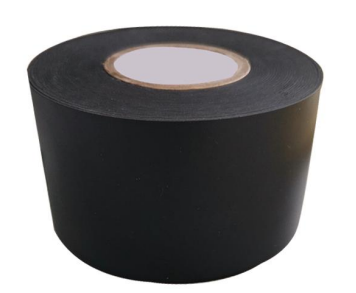The Importance of Floor Warning Tape in Safety and Efficiency
In various industries, ensuring safety and efficiency is paramount. One of the unsung heroes in maintaining a safe working environment is floor warning tape. Often overlooked, this simple yet effective tool plays a pivotal role in guiding personnel while preventing accidents in workplaces, warehouses, and public spaces.
Floor warning tape is a durable adhesive tape designed to highlight hazards, indicate walkways, and provide directional guidance. Available in a variety of colors, patterns, and materials, it serves multiple functions. The most common colors are yellow, black, red, and green, each signifying different warnings and instructions. For instance, yellow often denotes caution, indicating that an area may be hazardous, while green typically signals safe zones. The strategic use of different colors allows for immediate visual communication of essential safety information.
One of the primary purposes of floor warning tape is to prevent accidents. Slipping, tripping, and falling are some of the most common workplace injuries. By marking out walkways and hazardous areas, floor warning tape enhances visibility and awareness, reducing the likelihood of these incidents. For example, in a warehouse filled with heavy machinery and moving equipment, floor tape can delineate pedestrian walkways, ensuring that workers are aware of designated paths and do not venture into danger zones inadvertently.
In addition to preventing accidents, floor warning tape is essential for improving operational efficiency. In busy environments, such as factories or distribution centers, the movement of goods and personnel is constant. Clearly marked pathways help streamline these operations, allowing workers to navigate quickly and efficiently. This not only increases productivity but also minimizes confusion and potential disruptions in workflow.
floor warning tape

Moreover, floor warning tape has a significant role in emergency preparedness. In the event of an emergency, such as a fire or chemical spill, clearly marked evacuation routes can save lives. While many workplaces have plans in place, the physical representation of these routes on the floor using tape can greatly assist individuals in remembering and following them in high-pressure situations. The visibility of floor tape ensures that exits and safe paths are readily accessible, greatly enhancing the chances of a safe evacuation.
Installation of floor warning tape is not only straightforward but also cost-effective. Unlike permanent flooring solutions, floor tape can be applied quickly, making it an ideal choice for businesses looking to improve their safety protocols without disrupting daily operations. Furthermore, it can be removed and replaced as necessary, allowing organizations to adapt to changing environments or new safety regulations.
The versatility of floor warning tape extends beyond industrial settings. It is commonly employed in retail spaces, hospitals, schools, and other public areas. In retail, for instance, it can be utilized to create designated shopping lanes or indicate areas for social distancing, adapting to the needs of the current environment. In hospitals, it can guide patients and visitors to specific departments or alert them to restricted areas.
In conclusion, floor warning tape may appear to be a simple tool, but its impact on safety and efficiency is profound. By providing clear visual cues, it helps to prevent accidents, streamline operations, and enhance emergency preparedness across various settings. As workplaces and public spaces continue to evolve, embracing such straightforward yet effective measures will be crucial in promoting a culture of safety and operational excellence. Investing in quality floor warning tape is an investment in the well-being of employees and the overall efficiency of operations.
-
XIANGFAN Rubber Tape-Ultimate Solutions for All Your Insulation NeedsNewsJun.24,2025
-
XIANGFAN Rubber Tape-Protection for Industrial and Residential ApplicationsNewsJun.24,2025
-
XIANGFAN Rubber Tape: Superior Safety and Sealing for Demanding EnvironmentsNewsJun.24,2025
-
XIANGFAN Rubber Tape: Reliable Solutions for Every Electrical ChallengeNewsJun.24,2025
-
XIANGFAN Electrical & Industrial Tape: Powering Reliability Across IndustriesNewsJun.24,2025
-
XIANGFAN Electrical & Industrial Tape: Excellence in Every ApplicationNewsJun.24,2025
